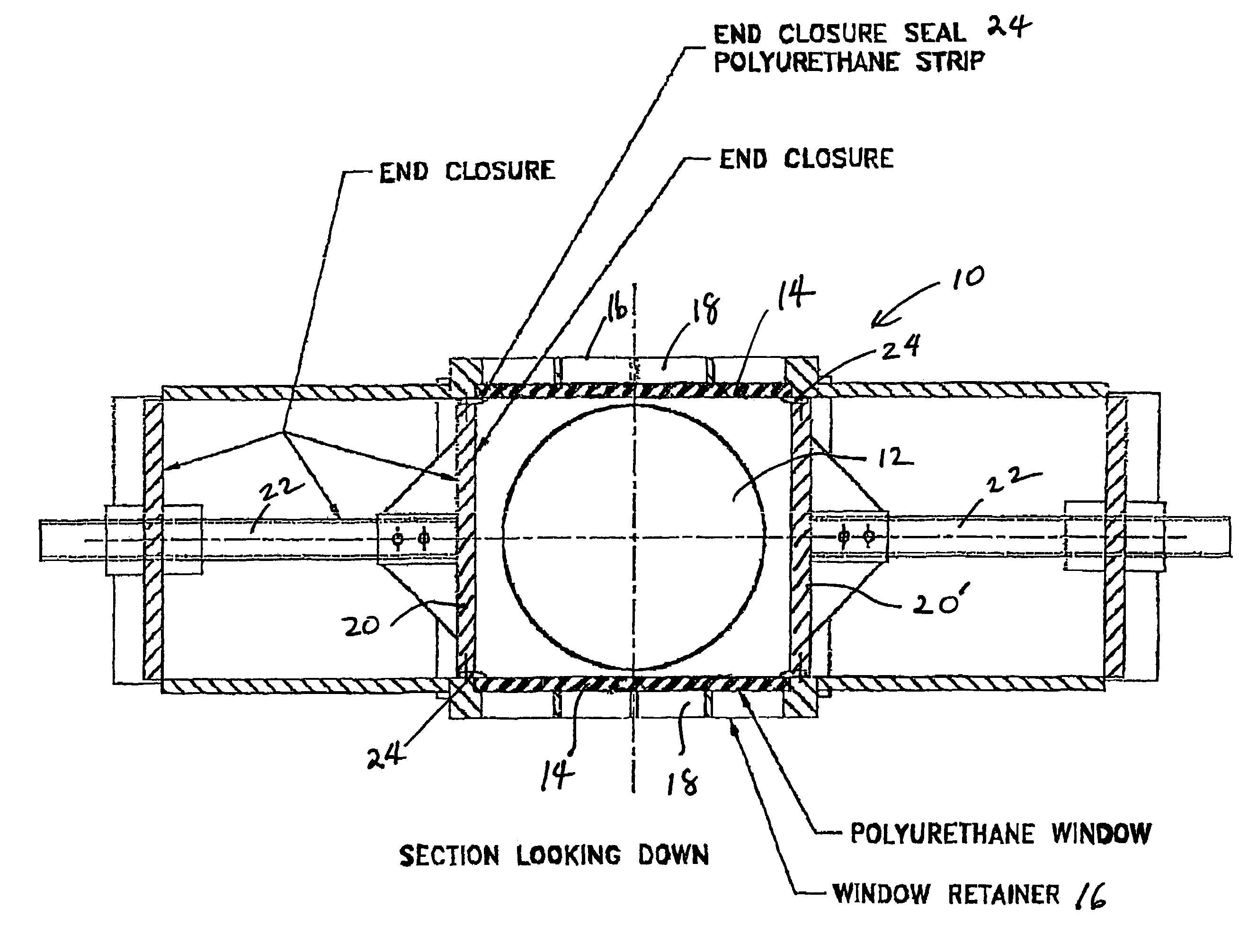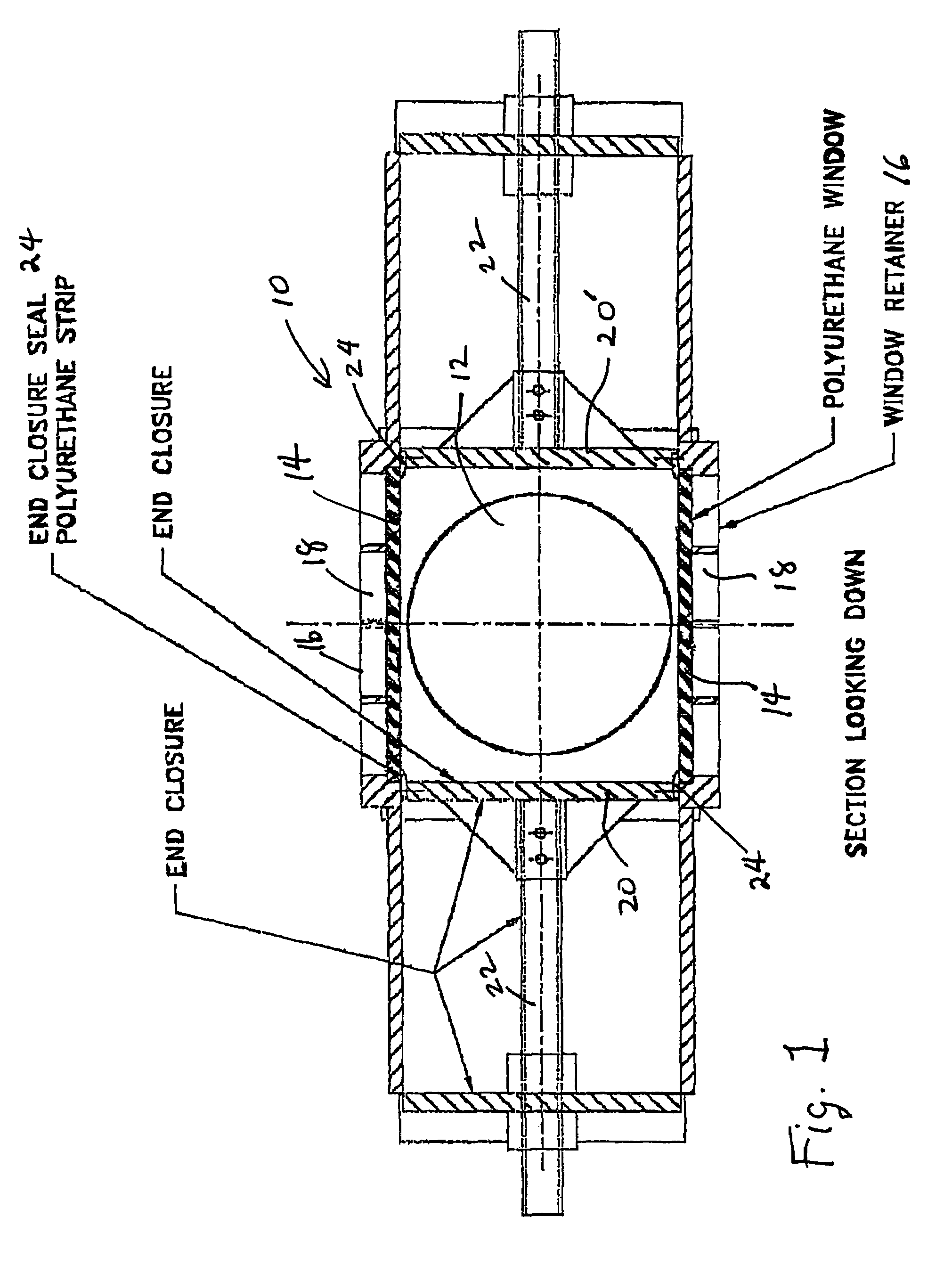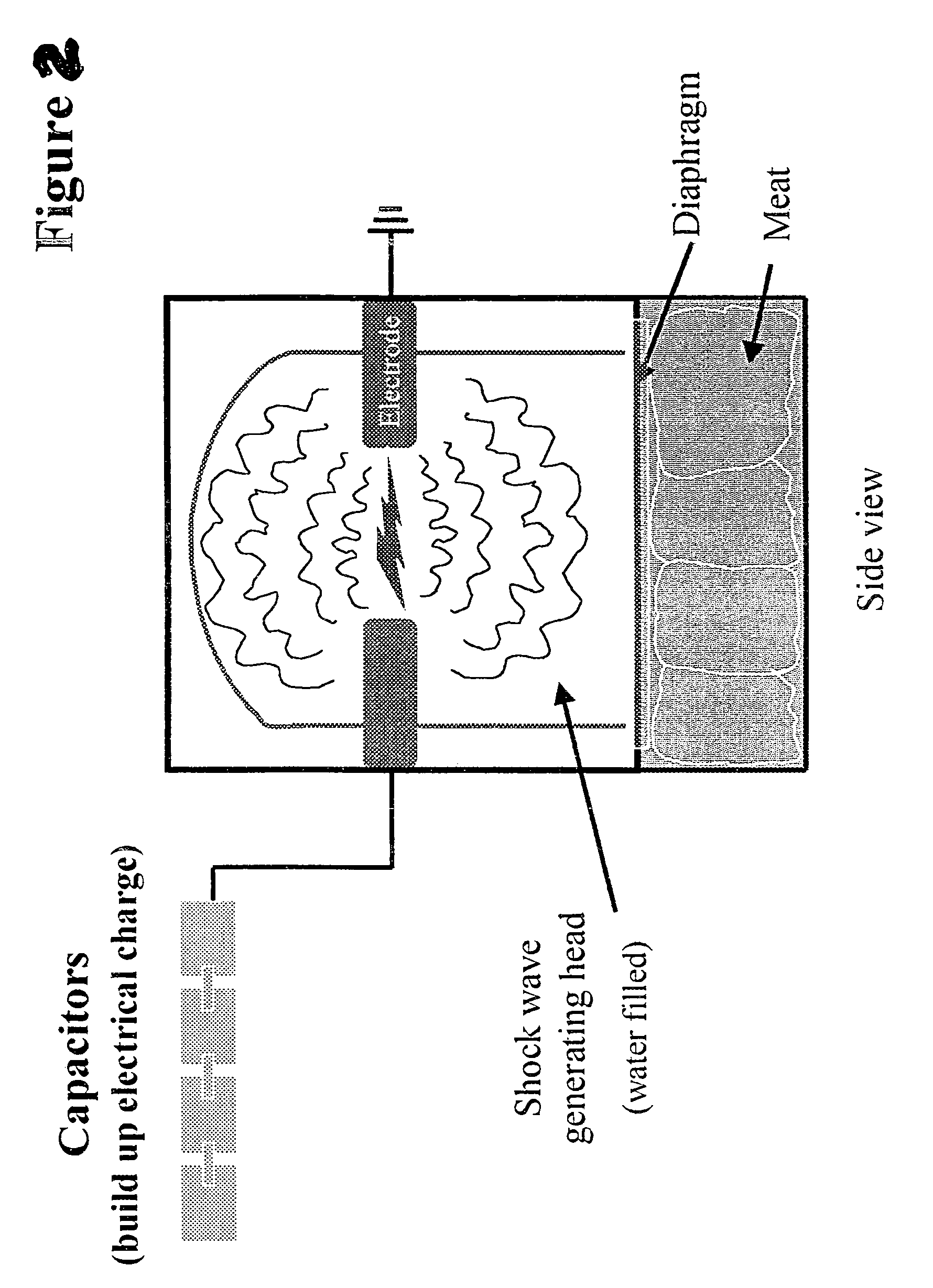Shock wave treatment of meat
a shock wave and meat technology, applied in the field of meat shock wave treatment, can solve the problems of high infrastructure cost, lack of optimization ability, and number of technological limitations of this approach, and achieve the effects of reducing such gaps, eliminating air pockets in meat, and excellent results
- Summary
- Abstract
- Description
- Claims
- Application Information
AI Technical Summary
Benefits of technology
Problems solved by technology
Method used
Image
Examples
example 1
Beef and Pork Results
[0030]The results presented below are from a number of different system configuration changes according to earlier embodiments and the present invention were being developed and tested. A variety of beef end cuts were tenderized. Beef top rounds were improved in tenderness by 19 to 28% (Table 1, wherein “TCS” designates shock wave treatment according to the present invention or earlier embodiments).
[0031]Relative to data presented in the 1998 National Beef Tenderness Survey, this reduction in shear was even greater than the difference in shear force between USDA Select and Choice grade beef (0.34 kg).
[0032]
TABLE 1Warner-Bratzler shear averages in kilograms (Kg) andstandard deviations for Shock wave treated beef top rounds and porkloinsIndividual muscles%Species and cut123456789101112Avg.changeBeef-top roundsControl5.45.63.36.44.77.16.25.16.6———5.6TCS 76%, 1 pulse5.04.73.95.14.06.72.74.24.4———4.519.2Control5.76.25.96.14.25.15.94.4————5.4TCS 72%, 3 pulses3.14.73.1...
example 2
Chicken Results
[0036]The initial application of shock wave treatment was centered around providing poultry processors the ability to eliminate the need to age broiler breasts on the front halves. Results indicated that an acceptable level of tenderness was achieved in the chicken breasts that were immediately deboned and shock wave processed after the muscle was setup into rigor (Table 2, set 2). The early deboned breasts, shock wave processed at 6 hours postmortem, were very close to an acceptability threshold (6.0 kg). Coupling electrical stimulation with shock wave treatment has the potential to eliminate the need to age broiler breasts.
[0037]
TABLE 2WBSa values on early deboned (exiting chiller)breasts shock wave processed using various pulses,energies, and times postmortemSet 1Set 2Shock waveShock wavetreatment 80%treatment 80%2 pulses2 pulsesControl6 hr PMControl24 hr PMAverage17.26.913.44.1Std.5.13.24.91.7devaWBS shear values obtained from convection oven cooked breasts and 1....
PUM
 Login to View More
Login to View More Abstract
Description
Claims
Application Information
 Login to View More
Login to View More - R&D
- Intellectual Property
- Life Sciences
- Materials
- Tech Scout
- Unparalleled Data Quality
- Higher Quality Content
- 60% Fewer Hallucinations
Browse by: Latest US Patents, China's latest patents, Technical Efficacy Thesaurus, Application Domain, Technology Topic, Popular Technical Reports.
© 2025 PatSnap. All rights reserved.Legal|Privacy policy|Modern Slavery Act Transparency Statement|Sitemap|About US| Contact US: help@patsnap.com



